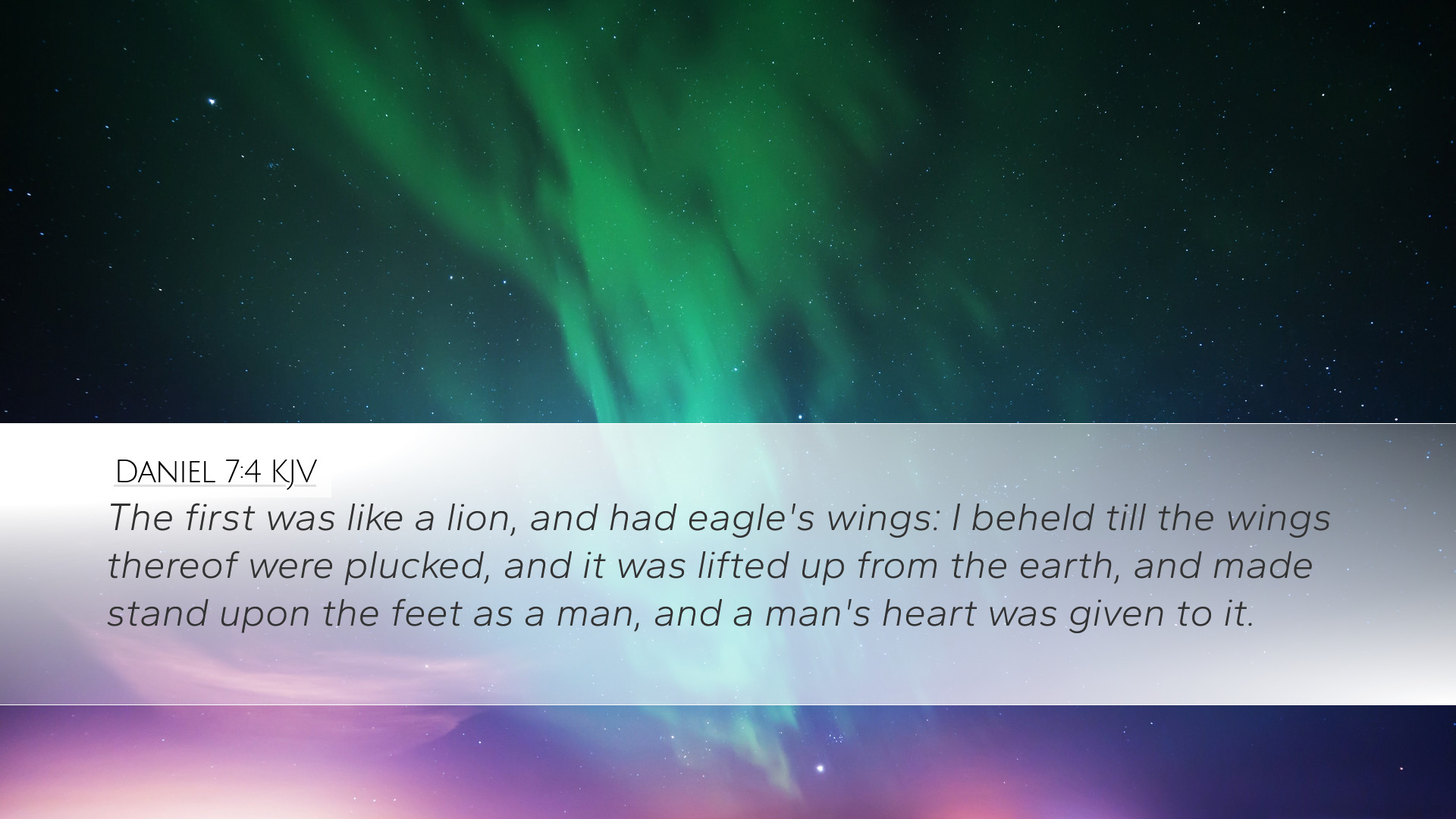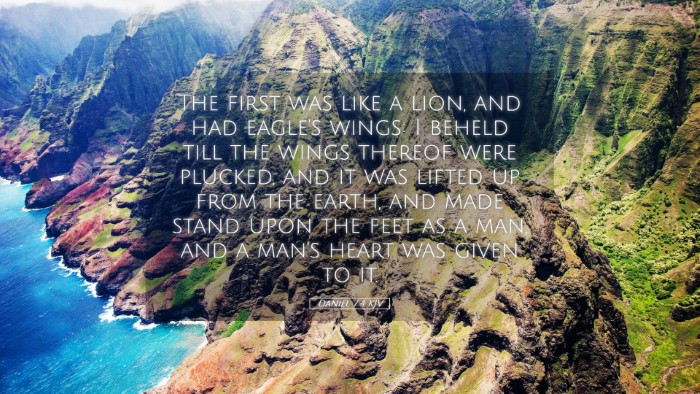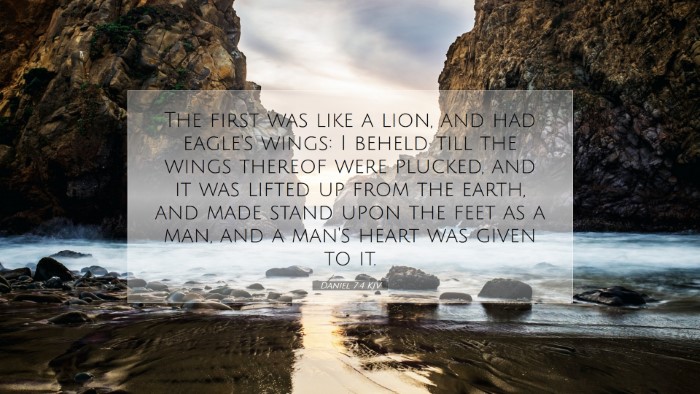Commentary on Daniel 7:4
Daniel 7:4 states, “The first was like a lion, and had eagle’s wings; I beheld till the wings thereof were plucked, and it was lifted up from the earth, and made stand upon the feet as a man, and a man’s heart was given to it.” This verse is part of a broader apocalyptic vision presented to Daniel, revealing the rise and fall of empires.
Significance of the Lion
The imagery of the lion in this verse is essential for understanding the nature of the first kingdom represented in Daniel’s vision. As noted by Matthew Henry, the lion represents strength and majesty. The lion, being the king of beasts, symbolizes the superiority of the Babylonian empire, which Daniel experienced firsthand. The mention of the lion having eagle’s wings signifies not only the swiftness of the Babylonian conquests but also the dominion and authority that this kingdom wielded over other nations.
The Wings Plucked
Henry further elaborates that the action of the wings being plucked suggests a significant change in the kingdom's power and status. This depiction reflects the idea of God’s sovereignty and control over nations, indicating that even the mightiest powers can be humbled. Albert Barnes notes this transformation, suggesting that the plucking of the wings symbolizes the curtailment of Babylon's aggressive expansion, leading to a phase of vulnerability and eventual decline.
The Lion Becomes a Man
The phrase "made stand upon the feet as a man" indicates a transition from beastly pride to a more human condition, signifying a loss of essential strength and ferocity. Adam Clarke emphasizes this transformation, interpreting it as an allusion to Nebuchadnezzar’s own downfall and restoration. This mirrors the narrative in Daniel 4, where Nebuchadnezzar experiences a descent into madness, representing the nations' arrogance before God.
Interpretation of the Heart of a Man
Clarke highlights that the "man’s heart" given to it denotes a shift in character from wild ferocity to one of reason and reflection. This can be seen as an allegory for the eventual recognition of God’s authority. Such transformation is vital for believers and scholars alike, as it represents how God can turn human hearts toward humility and acknowledge divine sovereignty, a theme echoed throughout Scripture.
Theological Implications
- Sovereignty of God: The entire dream emphasizes God's ultimate control over human history and political powers. The transition from a lion to a man serves as a reminder that human empires rise and fall under divine providence.
- Moral Accountability: The change in the beast’s nature reflects the moral responsibility of rulers and nations. As leaders are given knowledge and understanding, they carry the duty of just governance against the backdrop of divine expectations.
- Hope for Redemption: The imagery presents hope, as even those who have walked in pride can be restored. The transformation of kingdoms reflects God’s willingness to redeem not only individuals but also entire nations.
Conclusion
Daniel 7:4 serves as a multi-faceted verse rich in imagery and theological significance. It invites pastors, students, theologians, and Bible scholars to consider the themes of divine sovereignty, the nature of human pride, and the ongoing narrative of redemption. As they study this verse, one can reflect on the broader implications regarding leadership, nationhood, and the ever-present call to humility before God.


